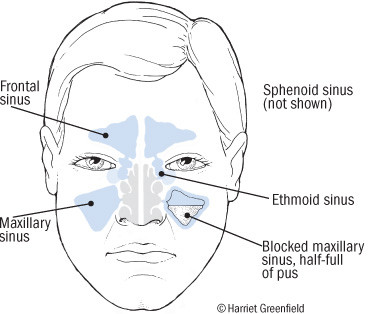Ear infections are a common health issue that can affect individuals of all ages. These infections often occur in the middle ear, the air-filled space behind the eardrum that contains the tiny vibrating bones of the ear. Such infections can cause pain, which may range from mild to severe.
The most common type of ear infection is the middle ear infection, also known as otitis media. This can occur when congestion from an allergy or cold blocks the eustachian tube. The resulting fluid and pressure buildup allows bacteria or viruses that have traveled up the eustachian tube into the middle ear to multiply, leading to an infection. It’s important to understand that while middle-ear infections are the most common illness that brings children to a doctor, they can affect adults as well.
Another type of ear infection is swimmer’s ear, which is different from a middle ear infection. Swimmer’s ear, or otitis externa, is an infection of the outer ear canal. It typically occurs when water remains in the ear after swimming, creating a moist environment that aids bacterial growth. Key symptoms of swimmer’s ear include pain that worsens when pulling the outer ear or pushing the tragus, itching, ear fullness or pressure, and decreased hearing. In severe cases, it can cause pain throughout the face and neck, fever, or swollen lymph nodes.
In contrast to these ear infections, cervical artery dissection, which can cause severe neck pain, is a serious condition unrelated to ear infections. This type of neck pain is unusual, persistent, and often accompanied by a severe headache. The pain from a carotid artery tear often spreads along the side of the neck and up toward the outer corner of the eye, while a vertebral artery tear may feel like something sharp is stuck in the base of the skull.
A neck abscess, another serious condition, presents with symptoms such as fever, red, swollen, sore throat, sometimes on just one side, a bulge in the back of the throat, the tongue being pushed back against the throat, neck pain and/or stiffness, ear pain, body aches, and chills.
A common but less serious issue is the feeling of a plugged-up ear. This can occur when the eustachian tube gets blocked, leading to less pressure in the middle ear. This creates a suction, pulling the eardrum inward and causing a full, plugged feeling in the ear.
Lastly, it’s important to note that ear infections are not contagious, although they often follow a cold or flu. Symptoms in adults can include ear pain, the most common sign of the condition. Chronic or reoccurring ear infections can lead to complications, such as a buildup of fluid in the ear or a ruptured eardrum.
For more information about earaches and ear infections, visit the Mayo Clinic Health System. To learn more about when neck pain is serious, see the article by Harvard Health. For detailed insights into middle-ear infections, refer to Harvard Health. Information about swimmer’s ear can be found at the Ohio State Health & Discovery. Details on neck abscesses are available at CHOP. For a discussion on the plugged-up feeling in an ear, visit Harvard Health. Finally, for more on ear infections in adults, see Wexner Medical Center.



